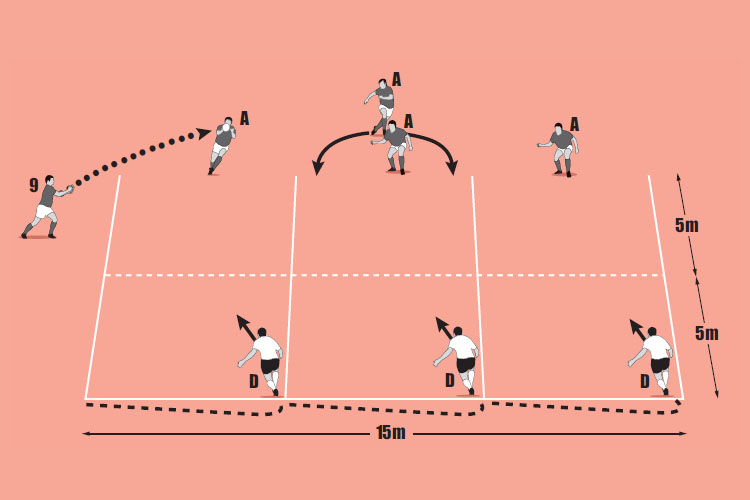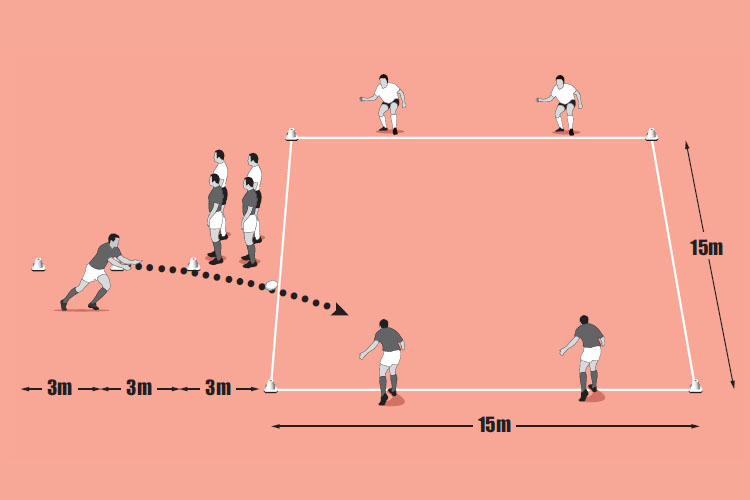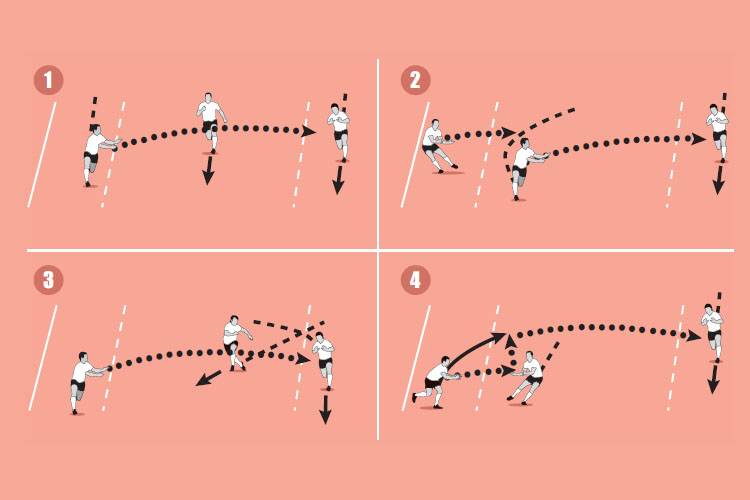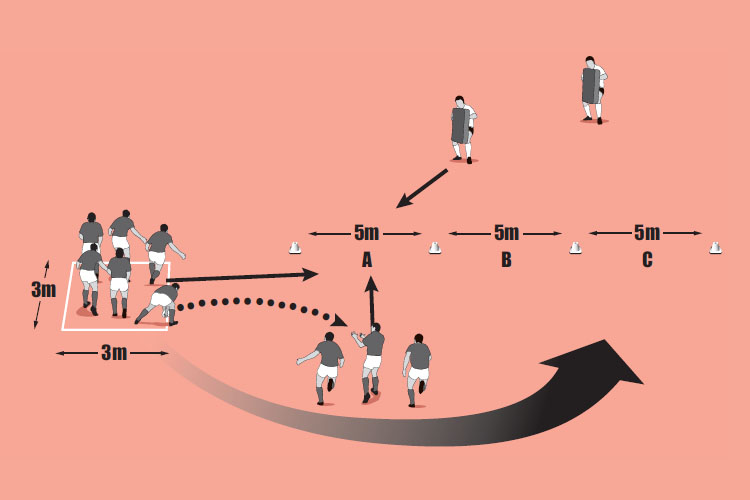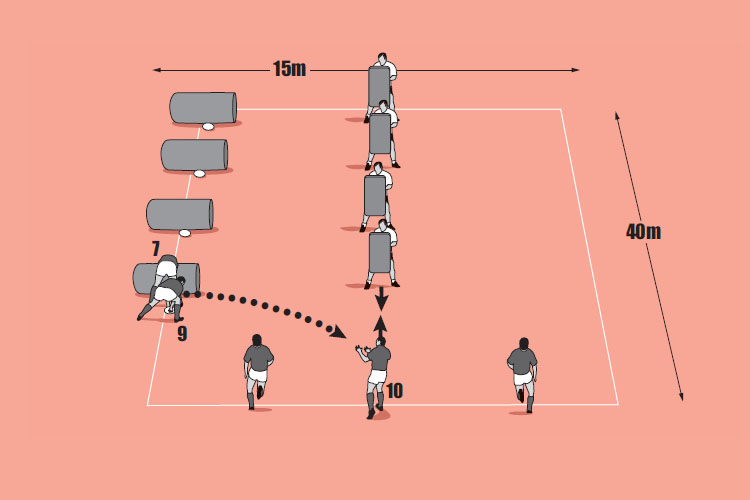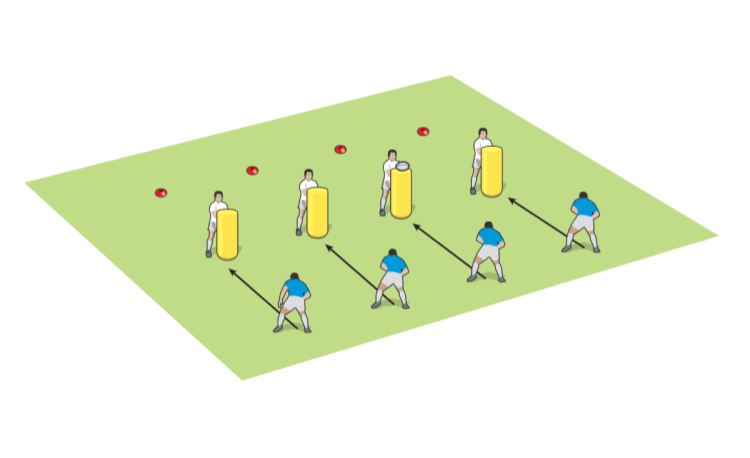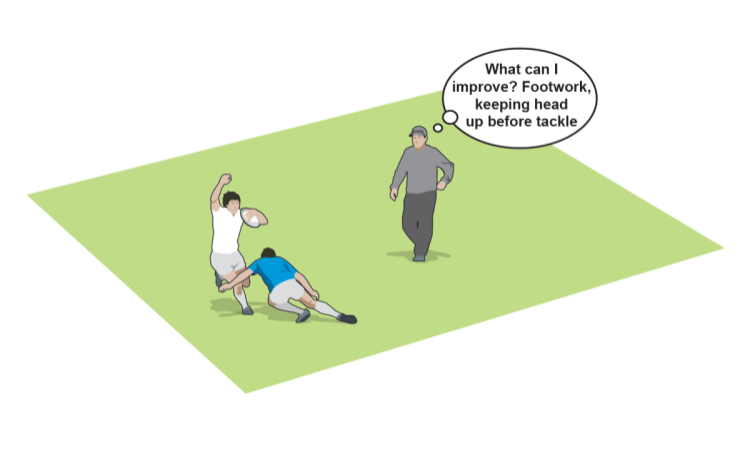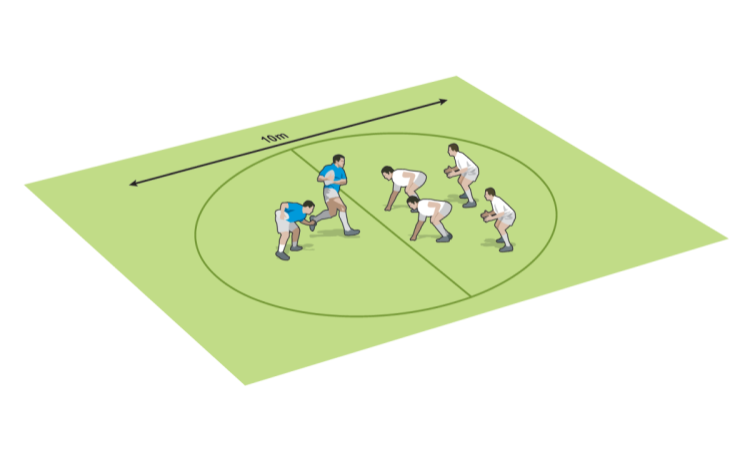You are viewing
1 of your 2 free articles
Get ready to blitz
Players need to position themselves outside their intended target to make sure they come from out to in on the “blitz”. This session works on alignment to blitz as pairs and threes and then how backs and forwards connect in defence.
Warm up time: 5-7
Session time: 8-10
Development time: 10-15
Game time: 15-20
Warm down time: 5-8
What to think about
The most important elements of the session for me are:- Work to get to the outside shoulder of the attacker you are marking.
- Move up to gain ground and move from out to in.
- Inside leg inside shoulder tackle.
- Always leave the outside attacker. When these situations are put into a full defensive blitz chain he will be taken care of by the extra defenders.
- Don’t get flat footed or planted - keep moving forward.
set-up
- Position yourself quickly on the outside of the player you are marking.
- Come forward fast.
- Outside players look out for attackers coming into the line.
What you get your players to do
Set up three attackers and a feeder in a 10m square divided into four, with one attacker in each box and an attacker behind them. Put a defender on the inside corner of each box (see picture 1). When you say:”GO”, the defenders run to the other corner before the ball is then released to the attackers. Defenders cut down the space for attackers who aim to get the ball to the spare player. Use touch tackling with two hands on the chest of the ball carrier.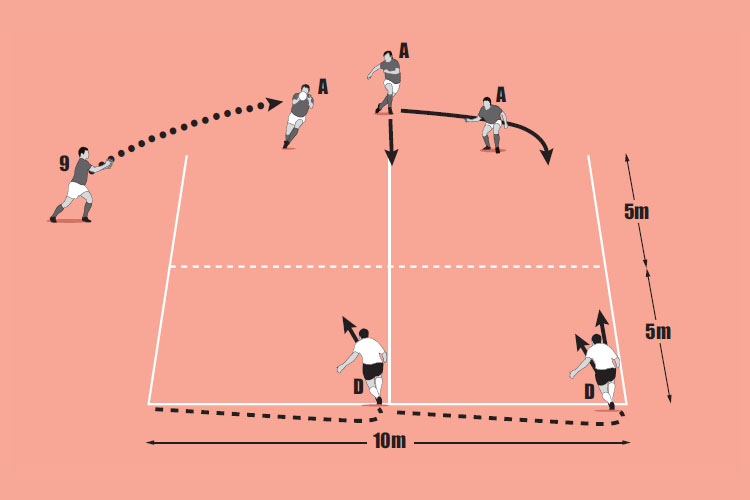
Development
Increase the playing area to 15m x 10m, add another box, defender and attacker (see picture 2). Play as before and concentrate on the wider blitz.Game situation
Put three defending forwards on one side of the area and three defending backs on the other side. Put a feeder by one side with five attackers in the front line and two behind (see picture 3). Defenders run around to form a line. Attackers aim for the “hinge” where the backs and forwards are supposed to connect. The defence aims to blitz the attack.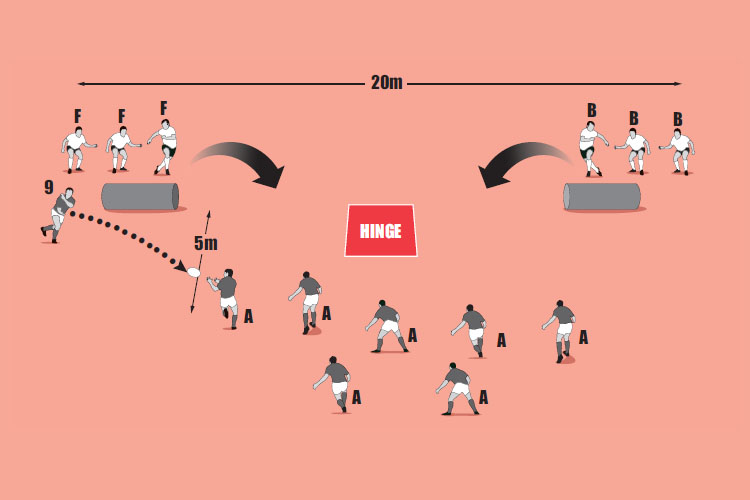
What to call out
- “Set yourself outside so you can see the attacker and where the ball is coming from”
- “Call when you are ready and call when you go forward”
Newsletter Sign Up
Coaches Testimonials

Gerald Kearney, Downtown Las Vegas Soccer Club

Paul Butler, Florida, USA

Rick Shields, Springboro, USA

Tony Green, Pierrefonds Titans, Quebec, Canada
Subscribe Today
Be a more effective, more successful rugby coach
In a recent survey 89% of subscribers said Rugby Coach Weekly makes them more confident, 91% said Rugby Coach Weekly makes them a more effective coach and 93% said Rugby Coach Weekly makes them more inspired.
Get Weekly Inspiration
All the latest techniques and approaches
Rugby Coach Weekly offers proven and easy to use rugby drills, coaching sessions, practice plans, small-sided games, warm-ups, training tips and advice.
We've been at the cutting edge of rugby coaching since we launched in 2005, creating resources for the grassroots youth coach, following best practice from around the world and insights from the professional game.
